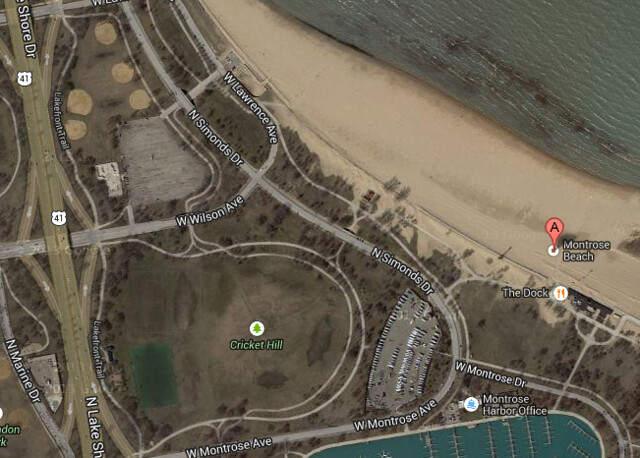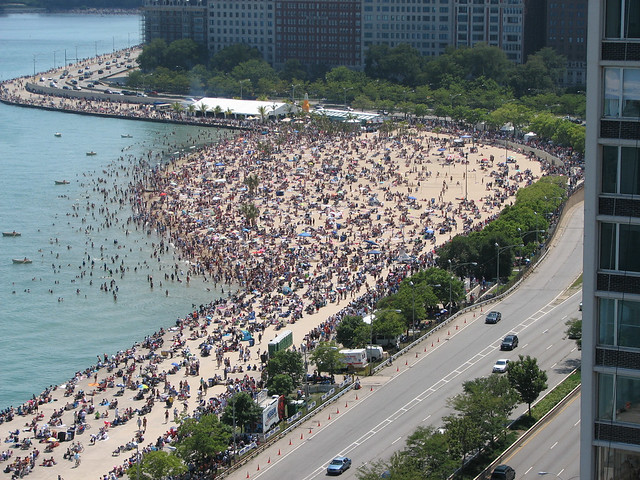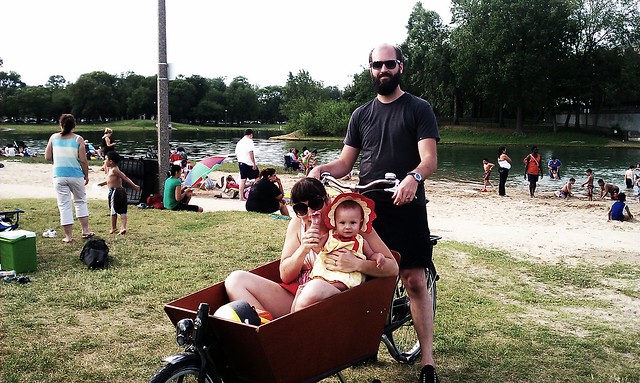
In the wake of a melee at Montrose Beach last Sunday -- the latest in a series of violent incidents -- 46th Ward Alderman James Cappleman proposed an intriguing strategy for preventing violence: reduce the number of parking spots at the beach.
On Sunday afternoon, a large group of people gathered at Montrose for an un-permitted concert called the Tamborazo Beach Party, which was promoted on social media, the Chicago Tribune reported. Around 7:30 p.m., six bike patrol officers entered the crowd to break up a fight.
As the police searched the audience for a reported “man with a gun,” attendees began throwing bottles, rocks and other objects, slightly injuring four officers and damaging a squad car. After police reinforcements arrived, ten males were criminally charged and seven men were charged with misdemeanors, the Trib reported. Two weeks before the incident, two women were shot near the beach.
In the wake of the concert melee, Cappleman told the Trib that the large amount of car parking at Montrose makes it easier for large crowds to quickly assemble there than at other beaches. “Look at Oak Street Beach,” he said. “Do you see this many parking spots there?” Oak Street has zero car parking, but is still an extremely popular destination for those who arrive on foot or by bike.

“Look at Lincoln Park,” Cappleman added. “There just aren't this many parking spots in such a concentrated area in other parts of the city. I want the Park District and the police department to come up with a plan to discourage that many people from driving down there and parking.”
Montrose is the city’s largest beach, and a Wikipedia entry asserts that Montrose has the most parking spaces of any Chicago beach. Streetsblog writer Steven Vance explored this issue last night on his personal blog. He calculated that, in addition to hundreds of curbside spots on roads within the parkland next to the beach, Montrose has two large parking lots totaling 9.25 acres, the equivalent of seven American football fields.
After architect Matt Nardella from moss design tweeted his support for Cappleman’s suggestion that parking at Montrose be reduced, Sun-Times education reporter Lauren FitzPatrick responded to express her dismay at the idea:
@mossdesign @JamesCappleman @streetsblogchi Not the answer! Oak Street also has tons more public transit options that Montrose does not.
— Lauren FitzPatrick (@bylaurenfitz) July 14, 2014
I tweeted that, while no one’s calling for removing all the parking spaces, Montrose could function just fine with fewer spots. “Do you use Montrose Beach too?” FitzPatrick responded. “It's my local. Parking is rarely fine on summer weekend days.”
Montrose is actually my favorite Chicago beach, since it’s one of the few local playas that’s far away from the sight and sound of Lake Shore Drive. I replied that Montrose is accessible by Divvy, and it's only a 20-minute walk from the Wilson Red Line station. During the summer, the CTA's #78 bus stops at Montrose Avenue and Simmonds Drive, less than a block from the beach house. “Easy [car] parking makes people overlook other modes,” I noted.
“I was a beach biker before I had a very small, very pale child along,” FitzPatrick responded. “Now those options aren't feasible.”
Of course, plenty of Chicagoans of various complexions transport their very small children on foot or by transit. 28.85 percent of local households don’t own cars, so these options are, in fact, feasible. UberX recently announced a new way to get around with kids without worrying about finding car parking: ride-share cars equipped with child seats.

And, I told FitzPatrick, while bicycling with small children may not be for everyone, I do know a dozen or two Chicago families who regularly transport their young kids by bike. Some have safely transported their infants using a Dutch-style box bike. You can learn more about cycling with children at a "Cargo Bike Roll Call" Steven is co-hosting this Saturday.
“Sure, some people may feel they need to drive [to Montrose Beach],” I tweeted. “But let's encourage those who don't not to.”
“There could be less [parking], is the point,” Nardella concluded. “The lakefront is for people, not cars.” Think about all the potential enhancements that could be added to the park if we converted even one of those seven football fields worth of car parking to public green space, rather than storage of private property.





